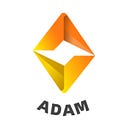Prospects for the development of ADAM’s encryption and computing network based on the merger of Ethereum
The “Ethereum merger” is the well-deser,ved number one event for the entire crypto industry in 2022. As an established plan written in the white paper, the transfer of Ethereum to Proof of Equity is a community consensus that has long been formed.
Why Ethereum Merger?
The most essential thing is to solve the problems of insufficient performance and high GAS of the Ethereum network. With the development of the Ethereum ecosystem, expensive transaction fees and low scalability have seriously restricted the development of the ecosystem, and users’ needs for improvements in Ethereum have become more and more urgent. Fragmentation will fundamentally solve this problem of Ethereum. A problem, and before opening sharding, “merging” is the basis for building shards.
The meaning of the Ethereum merger is to continuously expand and optimize, and then from the workload proof to the equity proof, in this process, the original ETH1 will be discarded through the difficulty bomb. Difficulty bomb: Greatly reduce miners’ income to encourage miners to switch from PoW to PoS. Only through the combined POS consensus mechanism can pave the way for subsequent shard chain upgrades, and shard chains can safely enter the Ethereum ecosystem.
At the beginning of this year, Ethereum officially finalized and “officially announced”: in the future, the names of ETH1 and ETH2 will be cancelled, and ETH1 and ETH2 will be replaced by the names of ETH execution layer and ETH consensus layer. To be clearly, “execution layer + consensus layer = New Ethereum”. The structure of the new “Ethereum” main chain will become: Ethereum main chain → beacon chain → shard chain.
You may have underestimated the impact of the Ethereum merger on the crypto industry
As the leader of encrypted ecological applications, Ethereum occupies half of all application-oriented public chains TVL, and the well-known BSC and Polygon account for only about 6% and 2%. For the giant ship of Ethereum, every slight change may affect thousands of applications on the chain and millions of industry users. The “Ethereum merger” is more like a direct replacement of the underlying cabin and engine of this giant ship. It is a change in the underlying rules, and its impact is far-reaching beyond imagination.
As the largest public chain in the encrypted world, Ethereum has built the largest “kingdom” in the world and continues to subvert the entire encrypted world. The core world view of the encrypted world is decentralization, and the meaning of Ethereum’s existence is to build the underlying structure and produce various decentralized “smart contracts” that realize social operation.
As the public chain with the most mature technology and the deepest accumulation, Ethereum has changed from a platform of ICO to a financial settlement layer of DeFi, and at the same time, it has obtained some of the currency settlement value of BTC. After Ethereum merges to PoS, it will greatly reduce the gas cost and the server level of the verifier; use the sharded network to improve the network throughput; use eWASM to reduce the difficulty of development. When Ethereum truly achieves the 2.0 upgrade, it means that it will take a key step towards the world-class financial settlement layer and the underlying structure of the Metaverse. Similarly, the emergence of “DeFi”, “Metaverse” and “Web3.0” will also lead to a breakthrough growth in the valuation of Ethereum.
DeFi, Metaverse, and Web3.0 and other tracks have surged in financing
After the crypto industry experienced the “DeFi wave”, especially after the concept of Metaverse and Web3.0 was proposed, it has truly ushered in the golden age of practicing value-at-risk investment. Many people in the industry have seen this trend.
The open source protocols and codes brought about by decentralization allow DeFi to gain better innovation capabilities. Its development speed is much higher than that of CeFi (centralized finance), and the delivery speed and cost are also much lower than CeFi. After the metaverse and Web3.0 came out, and the infrastructure began to gradually enrich, the imagination of the encrypted world really began to explode. Ethereum is currently the only public chain capable of carrying DeFi. With the recasting of finance by DeFi, it has also gained the value empowerment of the financial layer of the encrypted world.
With the merger and upgrading of Ethereum, the rapid development of DeFi, Metaverse and Web3.0, on this basis, a subversive revolution will appear in all walks of life, and as a result, new wealth distribution will appear, and the return on investment will be beyond imagination. investment opportunities. In this regard, capital is far more sensitive than ordinary investors.
In the morning of June 2022, Sequoia Capital has invested heavily in the Web3 field, launched two new funds with a total size of 2.85 billion US dollars, and announced that it will continue to expand investment in the Web3 field. These two funds are Sequoia Capital India Early Stage. Venture and Growth Fund (approximately US$2 billion) and Sequoia Capital Southeast Asia Exclusive Fund (approximately US$850 million).
Through the news media, it is not difficult to find that the financing volume of DeFi, Metaverse and Web3.0 is rapidly increasing. As the future development prospects of the crypto market more clearly ,more and more investment institutions are involving in the market. Recently, digital content producer Terapin Studios has completed $93 million in financing; Web3 biometrics startup Reltime has completed $50 million in financing; decentralized data platform Space and Time has also received $10 million in seed round financing. This is not an isolated case, but an era choice after stepping on the historical process. ADAM, as the first data encryption computing network based on Web3.0, will also follow the trend of development and strive to be the pioneer of the times.
